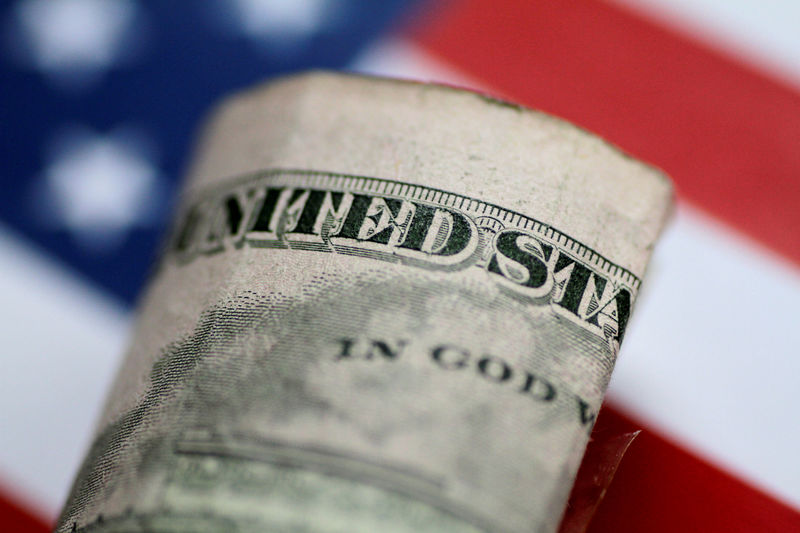Tonix Pharmaceuticals stock halted ahead of FDA approval news
Investing.com - The U.S. dollar edged higher Monday, bouncing off its lowest level in four months, but remained under pressure given the ongoing concerns that the Trump administration’s trade policies will hit economic activity in the world’s largest economy.
At 04:10 ET (09:10 GMT), the Dollar Index, which tracks the greenback against a basket of six other currencies, traded 0.1% higher to 103.959, just above the four-month low touched last week.
Dollar arrests recent slump
The U.S. dollar gained Monday, arresting the slide it has been over the last month amid uncertainty over U.S. President Donald Trump trade policies, and the potential impact on the U.S. economy.
Trump in a Fox News interview on Sunday declined to predict whether the U.S. could face a recession following his tariff actions on Mexico, Canada and China.
The dollar fell more than 3% last week against major rivals - its weakest weekly performance since November 2022.
Attention this week will be on the February consumer price index on Wednesday, for clues for future monetary policy decisions by the Federal Reserve.
“The core rate is expected to remain sticky at 0.3% month-on-month,” said analysts at ING, in a note. “This all supports Powell’s conclusion on Friday that the Fed does not need to be in a hurry to cut rates.”
Euro retreats after hefty weekly gains
In Europe, EUR/USD traded 0.2% lower to 1.0816, after clocking its best weekly performance since 2009 last week boosted by Germany’s game-changing fiscal reforms.
German election winner Friedrich Merz’s conservatives and the Social Democrats concluded preliminary talks on forming a coalition government on Saturday, with the two parties attempting to conclude a deal before next week when they hope to push a loosening of Germany’s borrowing limits.
Also of interest this week will be a meeting between U.S officials and their Ukrainian counterparts in Saudi Arabia to discuss a peace deal in the war between Ukraine and Russia, with the gathering said to take place in Jeddah on Tuesday.
“We favor a little EUR/USD consolidation in the 1.0770-1.0850 area at the start of the week and suspect that another leg higher will have to come from ECB speakers or significant progress in Saudi Arabia rather than the U.S. macro/rate side.” ING added.
GBP/USD fell 0.3% to 1.2880, handing back some of the recent gains after sterling touched a four-month high of 1.2946 earlier in the session.
Yen strengthens again
In Asia, USD/JPY dropped 0.6% to 147.17, with the pair falling close to its lowest point since early-October.
The yen strengthened chiefly on safe haven demand amid increased economic uncertainty. The currency also benefited from persistent bets on more interest rate hikes by the Bank of Japan, even as wage data for January read slightly weaker than expected on Monday.
USD/CNY traded 0.4% higher to 7.2655, with the Chinese currency falling after soft inflation data.
Chinese consumer and producer inflation data both shrank in February and came in weaker than expected, indicating that disinflation in the country still remained in play.
The reading came despite a string of measures from Beijing to shore up weak consumer spending, including subsidies on several discretionary goods.
